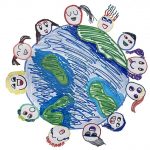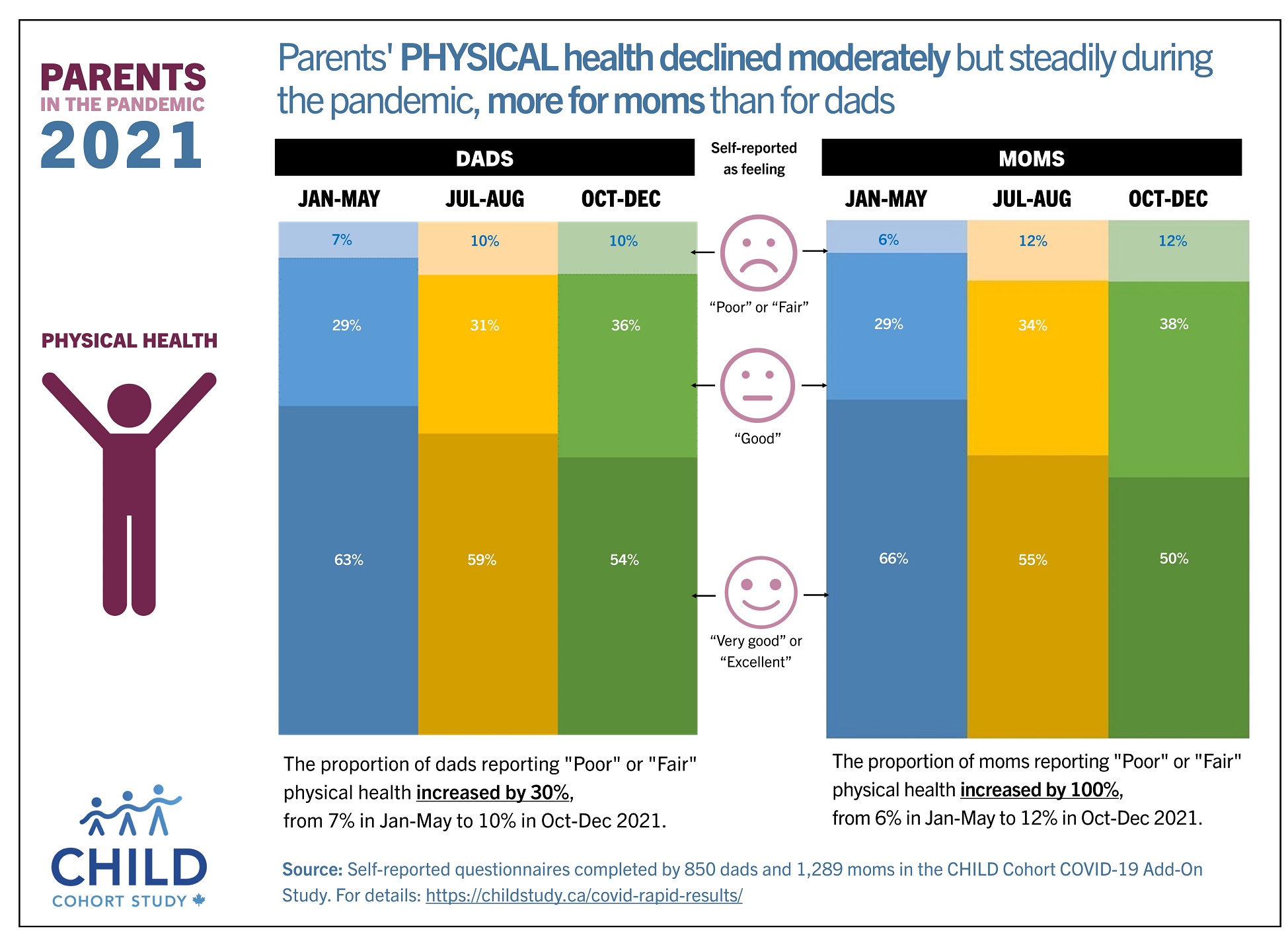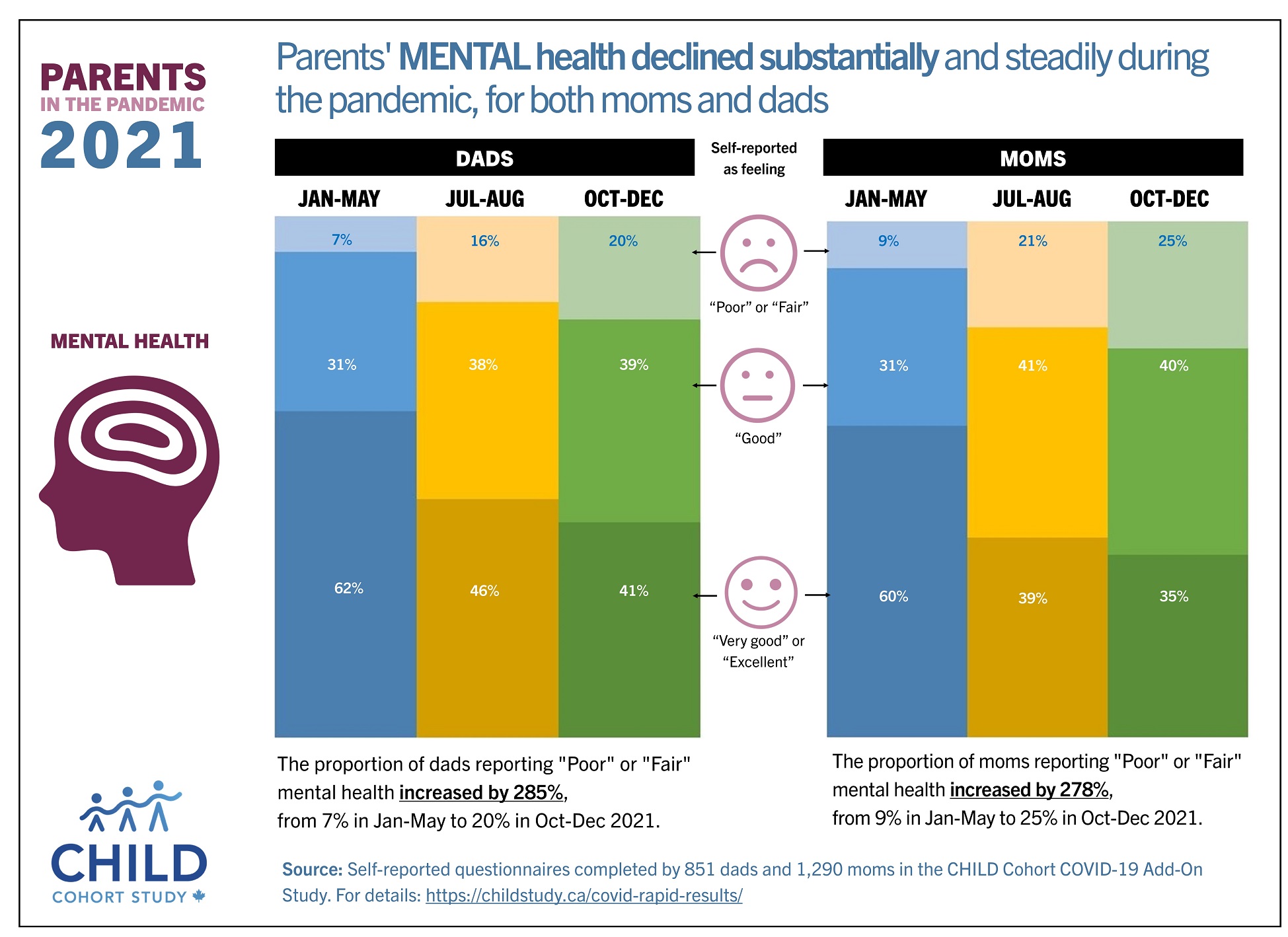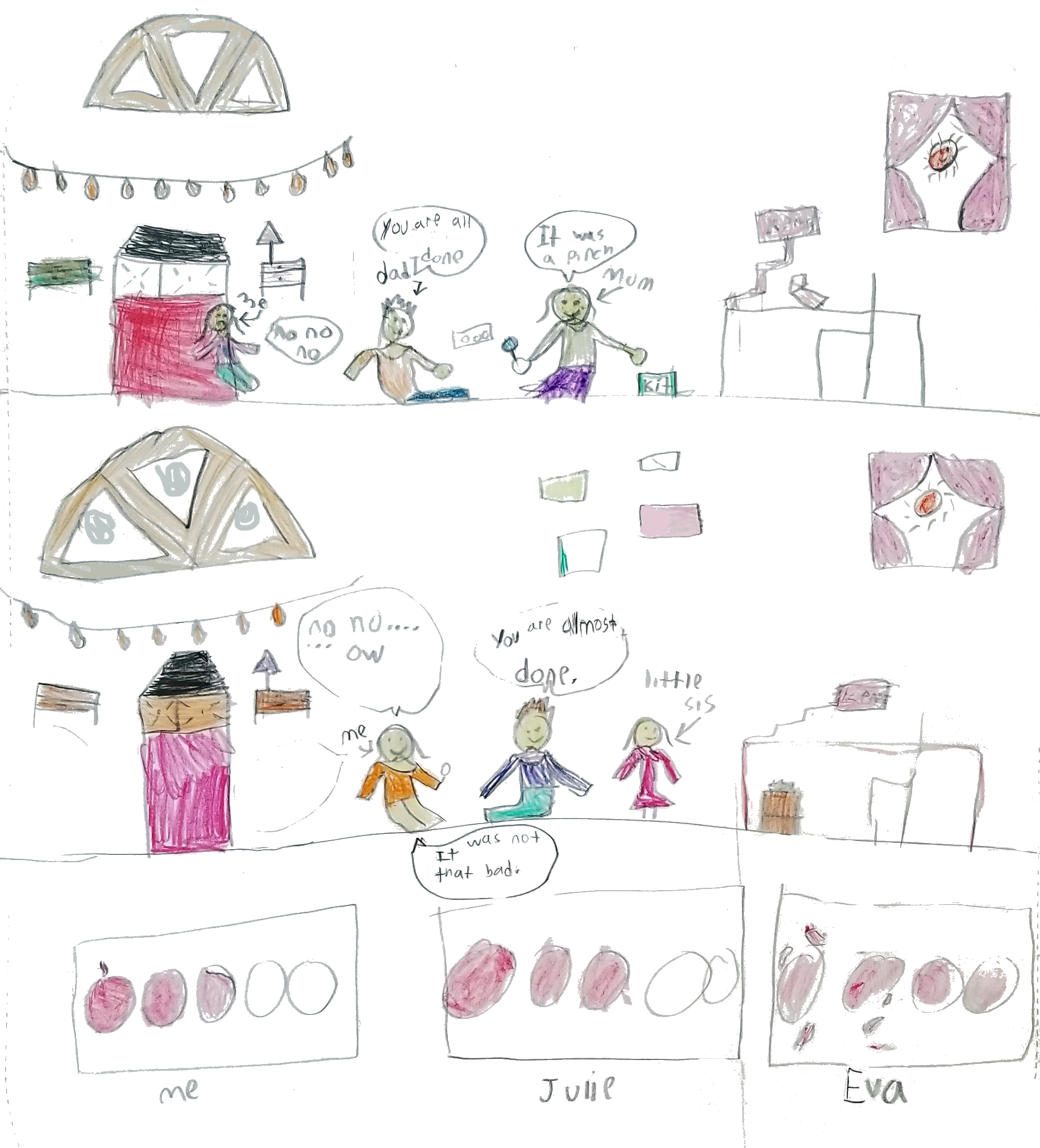
The data charts on this page have not yet been optimized for mobile screens. To see the charts properly, please view this page in landscape mode (rotate your phone onto its side) or on a larger screen.
While being shared publicly, this data is unpublished and remains the intellectual property of the CHILD Cohort Study. For more information on study data, contact child@mcmaster.ca
How to cite: CHILD Cohort Study (2021). “COVID-19 Rapid Results.” Retrieved from https://childstudy.ca/covid-rapid-results on [insert date].COVID-19 Rapid Results Infographics
The CHILD COVID-19 add-on study is providing insights into how the COVID-19 pandemic is impacting the physical and mental health of Canadian families. We are also exploring changes in routines, finances, and emerging topics like vaccine uptake and hesitancy.
This one-year study is exploring: why some people infected with the virus become seriously ill while others do not; risk factors for infection; and how physical distancing and school and business closures are affecting mental health and wellbeing, especially in children.
Participating households, recruited from the CHILD cohort, are completing questionnaires about the symptoms and impacts of COVID-19, how the pandemic has changed their daily lives, and their thoughts and worries about the virus. They are also collecting blood and stool samples for analysis.
We thank the CHILD participating families and their household members for their incredible dedication. Without their participation, this research would not be possible.
The study’s findings will help control subsequent waves of transmission and will help minimize the unintended consequences of pandemic management policies. Results will be published in peer-reviewed journals – but in addition, to accelerate and maximize the impact of this research, we have created this webpage to share results quickly with policymakers, other researchers, and our CHILD families.
To connect with the CHILD research team, please contact child@mcmaster.ca.
The participant experience
Kids in the families that are participating in the COVID-19 add-on study have been contributing artwork – videos, drawings, poetry and more – to the 2021 CHILD Arts Contest. In their art, they reflect on COVID-19, their experience with the add-on study, and the importance of CHILD research in this area. Some of these works are shared below.
Click on the thumbnails for larger versions, and visit the Contest gallery to see all the entries.
Livia, 10 years old, Toronto, ON
Blood Tests: It’s about me and my family doing the blood draw tests for the COVID add-on study. I was very very scared. So were my sisters, but mom and dad said it would hurt like a fast pinch and then be over quickly. Still… we were all very scared! In the end, I got a bandage and the whole experience was kind of fun.
Click on the image to enlarge.Alexia, 11 years old, Winnipeg, MB
Appreciation for CHILD StudyWho is participating in CHILD’s COVID-19 add-on study?


The data charts on this page have not yet been optimized for mobile screens. To see the charts properly, please view this page on a larger screen.
COVID-19
infection rates
The data charts on this page have not yet been optimized for mobile screens. To see the charts properly, please view this page in landscape mode (rotate your phone onto its side) or on a larger screen.
NOTE: The low infection rates reported here are attributable in part to how early, within the pandemic, some survey responses were submitted. Data will be updated as follow-up surveys are completed. Infection data based on blood analysis, once available, will complement the self-reported data given here.
Stress & Coping: Worry about infection & negative moods
Overall, parents reported higher levels of pandemic-related worry than children. Parents were about twice as worried about potential COVID-19 infection as their kids. About 50% of parents were moderately to extremely worried about becoming infected themselves, and around 70% were similarly worried about their family members becoming infected.
Parents reported being considerably more tired under pandemic conditions than children. Around 50-60% of parents were moderately to extremely tired, while only 20% of children reported such feelings. Parents reported slightly higher levels of other negative feelings than children; parental levels of anger, loneliness and stress were less prevalent than tiredness.
The data charts on this page have not yet been optimized for mobile screens. To see the charts properly, please view this page in landscape mode (rotate your phone onto its side) or on a larger screen.
Stress & Coping: Greatest sources of stress from the pandemic
Concerns about the pandemic’s impact on family members and children was the most common (68%) reported source of pandemic-related stress. Stress over other impacts (on health, work, the economy, and the community) were shared by 30-50% of respondents. Only 5% reported experiencing no pandemic-related stress.
The data charts on this page have not yet been optimized for mobile screens. To see the charts properly, please view this page in landscape mode (rotate your phone onto its side) or on a larger screen.
Stress & Coping: Activities undertaken to cope with pandemic-related stress
(REPORTED BY ADULTS ONLY)
About 50%-60% of adults reported social support (talking with friends and family), exercise, family activities and screen time as activities that helped them cope with pandemic-related stress. About a third found themselves coping through intellectual exercises (study or puzzles), eating more or drinking more alcohol, with lower rates of reporting for other stress-relieving activities.
The data charts on this page have not yet been optimized for mobile screens. To see the charts properly, please view this page in landscape mode (rotate your phone onto its side) or on a larger screen.
Stress & Coping: Degree of hopefulness about the pandemic ending soon
Overall, children were optimistic about the pandemic ending soon. Almost 80% of children felt hopeful to extremely hopeful; about 60% of adults shared this level of optimism. Three times the proportion of adults (15%) felt no hope at all, compared to children (5%).
Data is from the study’s initial baseline survey, collected between 11 January 2021 to 13 June 2021.
LIFE CHANGES
during the pandemic
Life Changes: Changes in daily routines during the pandemic
In the routines of children and adults alike, media/online activities increased most dramatically during the pandemic. Outdoor time increased for some and decreased for others in almost equal measure; there was less change with regard to eating and sleeping; and there was a significant drop for the majority in physical activity and in-person time with friends.
The data charts on this page have not yet been optimized for mobile screens. To see the charts properly, please view this page in landscape mode (rotate your phone onto its side) or on a larger screen.
Life Changes: Positive lifestyle changes during the pandemic
About 55%-70% of adults and children reported “more time with family” as a positive outcome of the pandemic. Other positive outcomes were reported by only about 10-25% of study participants.
The data charts on this page have not yet been optimized for mobile screens. To see the charts properly, please view this page in landscape mode (rotate your phone onto its side) or on a larger screen.
Life Changes: Behaviours undertaken to avoid COVID-19 infection
The vast majority of study participants (91-99%) reported adherence to standard pandemic prevention measures after September 2020. A small minority (5-8%) reported having to self-isolate or quarantine.
The data charts on this page have not yet been optimized for mobile screens. To see the charts properly, please view this page in landscape mode (rotate your phone onto its side) or on a larger screen.
Life Changes: Changes in overall healthcare during the pandemic
Most adults switched to online healthcare appointments. Most kids reported no significant changes in their overall access to healthcare.
The data charts on this page have not yet been optimized for mobile screens. To see the charts properly, please view this page in landscape mode (rotate your phone onto its side) or on a larger screen.
Life Changes: Changes in schooling during the pandemic
Life Changes: Changes in work during the pandemic
Almost half the working adults in the study reported having switched to working remotely. Some 30% reported a change in the number of hours they work, while almost one quarter reported that their jobs put them at increased risk of exposure to COVID-19.
The data charts on this page have not yet been optimized for mobile screens. To see the charts properly, please view this page in landscape mode (rotate your phone onto its side) or on a larger screen.
FINANCES
during the pandemic
The majority of study particpants reported experiencing no financial problems as a result of the pandemic. However, almost one quarter reported some degree of financial difficulty, with 4% impacted heavily.
Data is from the study’s initial baseline survey, collected between 11 January 2021 to date.















